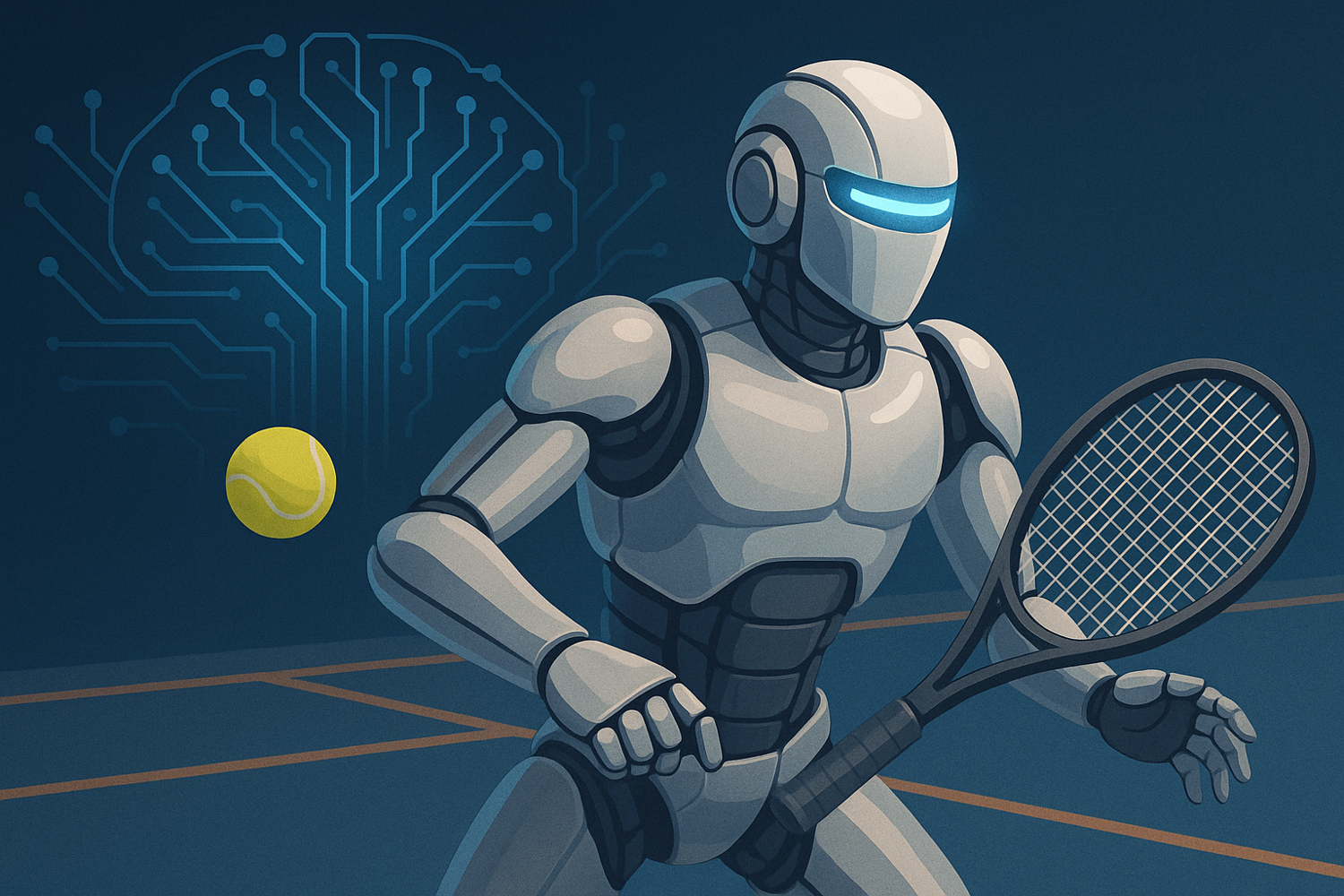
.png)
.png)
In the world of competitive tennis, milliseconds matter. The difference between a winning serve and a missed opportunity often comes down to subtle movements, split-second decisions, and razor-sharp strategy. As technology continues to transform industries, the tennis court is no exception. Artificial Intelligence (AI) is now taking center court—redefining how players train, coaches analyze, and fans engage with the game.
From smart rackets to AI video analytics, let’s explore how AI is acing tennis training and making champions smarter, faster, and stronger.
Gone are the days when coaching relied solely on intuition and post-match video replays. Today, AI offers real-time insights that can dissect a player’s technique, tactics, and performance with pinpoint accuracy.
AI-powered cameras track every movement of a player—from footwork to racket angle—generating frame-by-frame breakdowns of strokes and serves. By using pose estimation and motion tracking, platforms like SwingVision and Playsight analyze swing mechanics and highlight areas for improvement without the need for manual review.
AI models trained on thousands of match recordings can offer player-specific feedback. Whether you're Novak Djokovic or a junior league hopeful, the system can tailor training programs based on your style, errors, and tendencies. This democratizes elite-level coaching and allows players to self-correct between sessions.
Elite tennis isn’t just about hitting the ball—it's about strategy, anticipation, and reading your opponent.
Machine learning models analyze historical match data to understand patterns in a player’s behavior. Want to know what Rafael Nadal is likely to do on his second serve when he's under pressure? AI can tell you. This allows players to simulate scenarios and strategize like a chess grandmaster before stepping onto the court.
Virtual reality (VR) and AI together offer mental conditioning tools that mimic high-pressure match environments. Athletes can practice maintaining focus while handling crowd noise, distractions, and clutch moments—something traditional training often fails to replicate.
Sensors embedded in wearables monitor stress levels on joints, muscle fatigue, and repetition counts. AI algorithms detect unusual patterns that could lead to overuse injuries. With this insight, coaches can adjust training intensity, recommend recovery routines, or suggest alternative drills to keep players healthy.
Generative AI is not just helping athletes train harder—it's helping them train smarter.
Tools like ChatGPT or custom LLM-based assistants can generate training routines based on player weaknesses, opponent profiles, or upcoming court surfaces. Coaches can request "three drills to improve second-serve consistency on clay," and receive tailored programs in seconds.
Post-match debriefs no longer require hours of video review. Generative AI can summarize a three-hour match into key moments, highlight reel-worthy plays, and offer tactical insights—streamlining the learning cycle.
Tennis legends of the future may not just be discovered—they might be engineered. AI’s role in scouting young talent, refining raw skill, and preventing burnout is already underway. National federations and academies are investing in AI infrastructure to fast-track talent development while minimizing risk.
While AI is transforming tennis training, it’s not here to replace coaches or the human spirit of the game. Instead, it's becoming the ultimate doubles partner—bringing precision, personalization, and predictive power to the baseline. As the sport continues to evolve, one thing is clear: in the game of tennis, the smartest serve may soon be the one powered by AI.